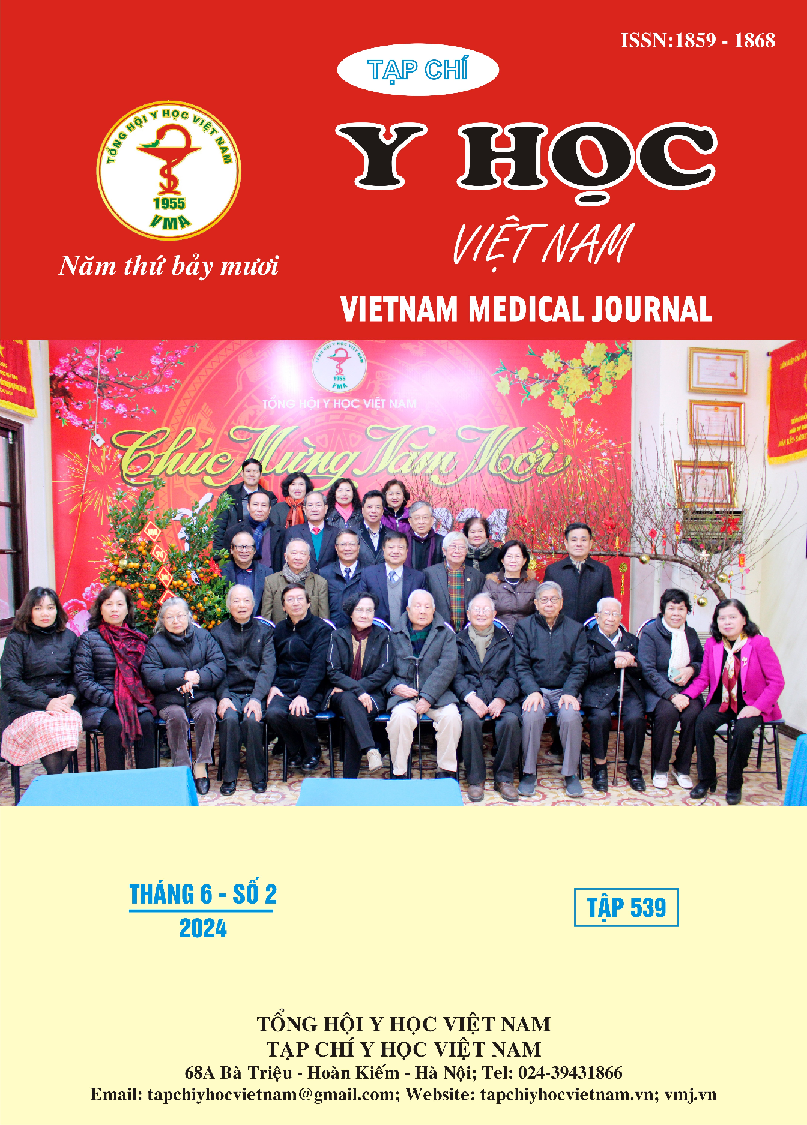INITIAL ASSESSMENT OF THE TREATMENT EFFECTIVENESS OF ARV DRUGS AND REPLACEMENT MILK IN THE PREVENTION OF MOTHER-TO-CHILD HIV TRANSMISSION
Main Article Content
Abstract
Introduction: Currently, there are no studies in Vietnam evaluating the effectiveness of ARV drugs and substitute milk in preventing mother-to-child transmission of HIV. This sudy aims to evaluate the effectiveness of ARV drug intervention and substitute milk in preventing mother-to-child transmission of HIV in An Giang province. Materials and Methods: The subjects are pregnant women with HIV who came for prenatal care and childbirth in An Giang province from August 1, 2008, to December 31, 2010. Newborns and mothers diagnosed with HIV mentioned above and in neighboring areas are managed and monitored for mother-to-child HIV transmission at healthcare facilities in An Giang province. Results: When the mother does not use ARV, the risk of the child contracting HIV increases by 7.5 times, and this increase in the rate of mother-to-child HIV transmission is statistically significant. Mothers who do not use ARV before and/or during childbirth show a fairly high rate of HIV transmission to their children, accounting for 35.71%. In cases where the mother only uses NVP during labor, the rate of HIV transmission to the child is 11.11%; similarly, if the mother only uses AZT + 3TC + NVP during labor, the rate of HIV transmission to the child is 6.45%. Notably, when the mother uses the AZT regimen from the 28th week of pregnancy, the rate of mother-to-child HIV transmission drops to just 3.13%. In cases where the mother is prescribed a regimen for HIV treatment, we have not recorded any instances of the child contracting HIV. The rate of mother-to-child HIV transmission is inversely proportional to the duration of the mother's medication use. The use of substitute milk has prevented almost all cases of HIV transmission through breastfeeding. Conclusion: HIV-infected mothers who do not use ARV drugs to prevent mother-to-child transmission of HIV show a 7.5 times higher risk of their children being infected with HIV compared to the group that uses the drugs. Exclusively feeding with substitute milk for the first 6 months has proven to be very valuable in preventing mother-to-child transmission of HIV.
Article Details
Keywords
ARV drugs, alternative milk, HIV transmission, mother to child.
References
2. Cục Phòng Chống HIV/AIDS – Bộ Y tế (2010), Tình hình dịch HIV/AIDS khu vực Đồng bằng sông Cửu Long, Hội thảo của Ủy ban các vấn đề xã hội của Quốc hội, Cần Thơ, ngày 11 tháng 08 năm 2010.
3. Trung tâm phòng chống HIV/AIDS tỉnh An Giang (2010), Báo cáo hoạt động phòng, chống HIV/AIDS năm 2010 tỉnh An Giang.
4. Chasela CS. (2010), Maternal or infant Antiretroviral drugs to reduce HIV-1 transmission, New England Journal of Medicine, 362(24): 2271-81.
5. Chersich MF. (2006), Efavirenz use during pregnancy and for women of child-bearing potential. AIDS Research and Therapy, 3:11.
6. Connor EM. (1994), Reduction of maternal-infant transmission of human immunodeficiency virus type 1 with zidovudine treatment. Pediatric AIDS Clinical Trials Group Protocol 076 Study Group. New England Journal of Medicine, 331(18):1173–1180.
7. Dabis F, Msellati P, Meda N, et al. (1999), 6-month efficacy, tolerance, and acceptability of a short regimen of oral zidovudine to reduce vertical transmission of HIV in breastfed children in Côte d'Ivoire and Burkina Faso: a double-blind placebo-controlled multicentre trial. DITRAME Study Group. Diminution de la Transmission Mère-Enfant. Lancet. 353(9155) :786-792.


